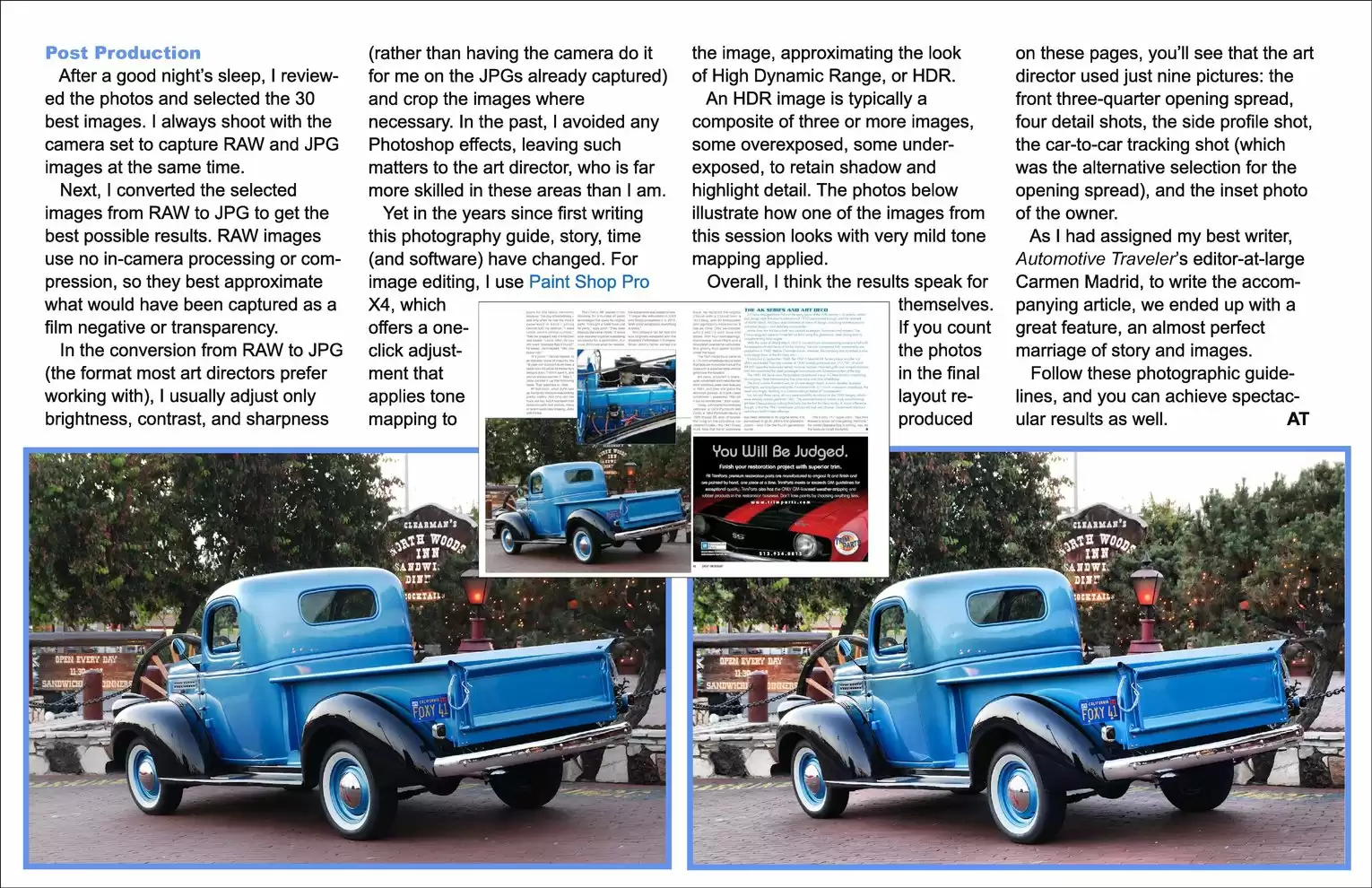
Post Production
After a good night's sleep, I reviewed the photos and selected the 30 best images. I always shoot with the camera set to capture RAW and JPG images at the same time.
Next, I converted the selected images from RAW to JPG to get the best possible results. RAW images use no in-camera processing or compression, so they best approximate what would have been captured as a film negative or transparency.
In the conversion from RAW to JPG (the format most art directors prefer working with), I usually adjust only brightness, contrast, and sharpness (rather than having the camera do it for me on the JPGs already captured) and crop the images where necessary. In the past, I avoided any Photoshop effects, leaving such matters to the art director, who is far more skilled in these areas than I am.
Yet in the years since first writing this photography guide, story, time (and software) have changed. For image editing, I use Paint Shop Pro X4, which offers a one-click adjustment that applies tone mapping to the image, approximating the look of High Dynamic Range, or HDR.
An HDR image is typically a composite of three or more images, some overexposed, some under-exposed, to retain shadow and highlight detail. The photos below illustrate how one of the images from this session looks with very mild tone mapping applied.
Overall, I think the results speak for themselves. If you count the photos in the final layout re-produced on these pages, you'll see that the art director used just nine pictures: the front three-quarter opening spread, four detail shots, the side profile shot, the car-to-car tracking shot (which was the alternative selection for the opening spread), and the inset photo of the owner.
As I had assigned my best writer, Automotive Traveler's editor-at-large Carmen Madrid, to write the accompanying article, we ended up with a great feature, an almost perfect marriage of story and images. Follow these photographic guide-lines, and you can achieve spectacular results as well.
| Previous Page | Back |